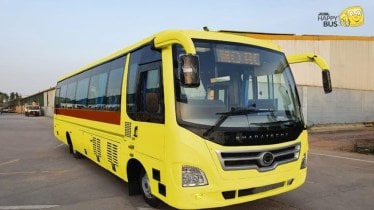In the post-pandemic world, road transport in India is picking up at a significantly fast pace. Within this space, the luxury bus market needs special mention. The series of lockdown in the country and general avoidance of shared mobility in a Covid-scarred ecosystem led to a whopping depletion in demand. However, recent data and views of industry stakeholders indicate that the worst might be over and the segment is slowly getting back on the track.
Specifically looking at inter-city luxury transportation, almost 35-40 percent of the services have now been restored, as per industry leaders. Though a good majority of people still prefer private vehicles, the trend and the steady rise in demand for luxury buses is encouraging.
With the rise in demand, the range of options is also increasing, especially the electric offerings. In fact, Sanjeev Babbar, Director, JCBL said, “all leading players are focused on electric buses for mass mobility in cities. So, the entire focus is now directed toward the electric portfolio.”
He added that the share of electric mobility in the segment after the pandemic accounts for nearly “8-10 percent in active city application, around 25-30 percent in school and staff transportation and the remaining is public transportation.”
Babbar pointed out that JCBL’s portfolio in terms of mobility solutions caters to about 8-10 percent of intercity applications. “We have a few orders under process for sleeper coaches and inter-city buses. There is a shift in the sense that all high-end operators want exclusive products when it comes to electric mobility. Almost all leading OEMs are offering fully built-up solutions,” he explained. He gave the example of Prawaas that launched a fully built-up solution in terms of sleeper coaches and inter-city buses.
This as a result necessitates that manufacturers are also aligned to supply such buses. Indicating the shifting dynamics of the business, Babbar highlighted how “The chassis and body application which was a big business before the pandemic has shrunk due to regulatory requirements. Ultimately, if it is not a very highly customised solution required by the operator or the end customer, people still prefer to go for a fully built-up solution from the OEM itself.”
On the positive side, Babbar believes that this also leads to a “price advantage in terms of funding wherein they buy a fully built-up solution from the OEM or dealers and get a price advantage.”
Speaking specifically about JCBL’s growth outlook and the kind of growth they expect, Babbar said that the company is likely to clock “almost 3500 passenger applications and about 1500 goods applications related to infrastructure, mining, trailers. 60 percent of our sales are passenger applications and 40 percent are goods applications.” He reitereated that “We have a full portfolio as far as our business is concerned. In the last 6-7 months, we have been operating at peak capacities. We are expecting to achieve the pre-pandemic numbers by the end of this year.”
